Supply chain disruptions are inevitable, but you can manage them effectively.
This guide provides clear steps on how to handle supply chain disruptions, from identifying risks to implementing contingency plans and enhancing visibility.
Key Takeaways
-
Effective supply chain disruption management requires understanding both internal and external risks, with a focus on preparedness, resilience, and the utilization of technology.
-
Digital tools and predictive analytics are crucial for identifying potential risk factors and enhancing visibility in supply chain operations, enabling proactive response to disruptions.
-
Building strong supplier relationships and diversifying the supplier network are essential strategies for enhancing supply chain resilience and ensuring quick responses to unforeseen challenges.
Understanding Supply Chain Disruptions
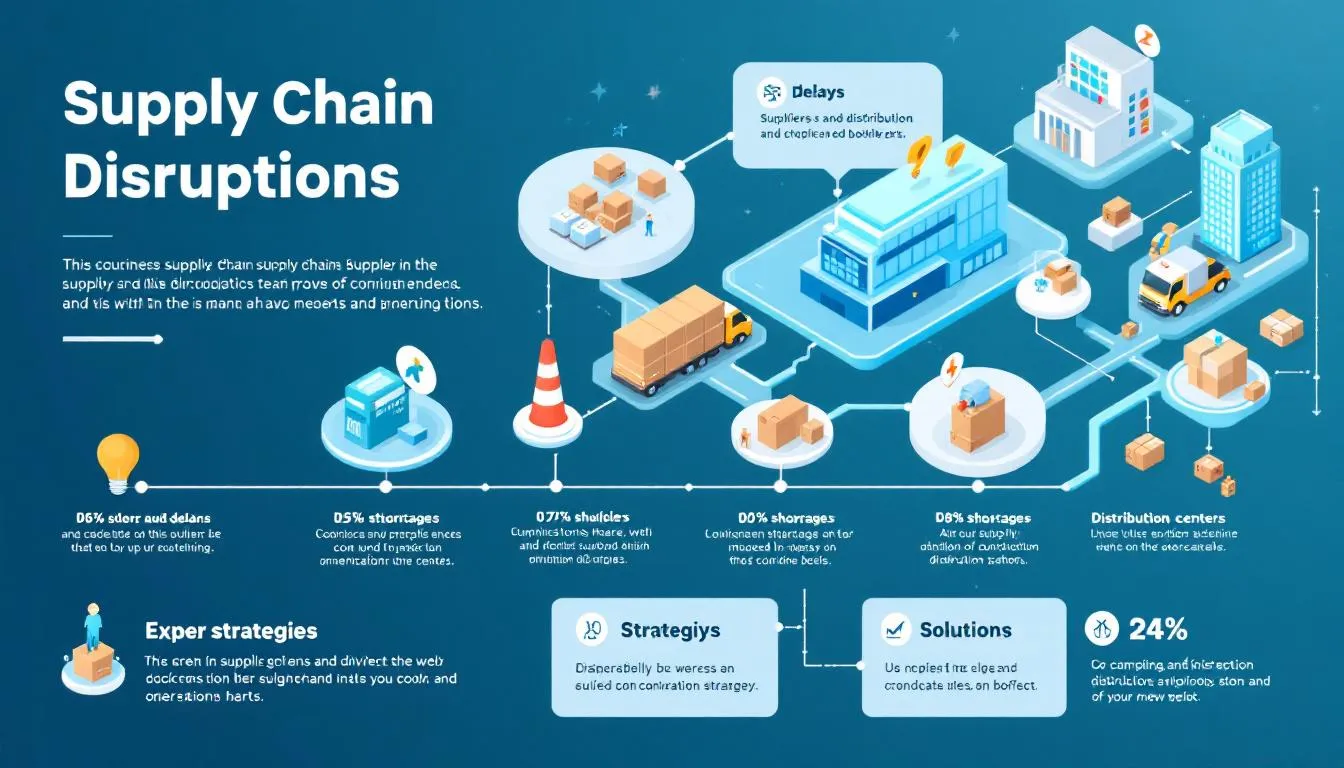
Supply chain disruptions are interruptions in the regular flow of goods, causing delays, increased costs, and customer dissatisfaction. These disruptions can stem from various causes, including global pandemics, changes in consumer behavior, shortages of raw materials, supply chain shocks, and unpredictable events. In recent years, ongoing supply chain issues and supply chain challenges have become major concerns for businesses due to global events such as the pandemic, geopolitical unrest, and natural disasters. Labor shortages, including shortages of truck drivers, are a significant cause of supply chain disruptions. The COVID-19 pandemic caused widespread supply chain disruption affecting nearly every sector of the global economy. Logistics challenges have also played a major role in impacting the availability and delivery of goods across industries. When supply chain disruptions occur, the impact of supply chain is far-reaching, leading to negative financial performance, operational inefficiencies, and dissatisfied customers.
Effectively managing supply chain risks requires a focus on preparedness and resilience. Companies need to understand both internal and external risks, create contingency plans, and use technology to improve visibility and responsiveness while managing supply chain risk. Companies can reduce internal risks by improving supply chain management processes and using automation to ensure accuracy. In the modern supply chain, increased complexity and interconnectedness make organizations more susceptible to disruptions, highlighting the need for adaptive strategies.
Internal Risks
Internal risks are those that originate within the company, such as:
-
Production errors
-
Local labor shortages
-
Equipment breakdowns
-
Quality control issues
-
Shortages or failures of critical components, which can halt production and lead to significant delays.
-
Inefficient supply chain management processes and human error, which can lead to operational delays
-
Internal risks include inefficient supply chain management processes and human error, which can lead to operational delays.
These everyday challenges can lead to significant disruptions in today’s global supply chains and prevent supply chain disruptions if not managed properly, especially in light of demand fluctuations.
Addressing internal risks involves minimizing data errors and consistently updating contingency plans to reduce risk and ensure effective risk reduction.
External Risks
External risks, on the other hand, are beyond a company’s control. These include natural disasters like hurricanes and floods, geopolitical tensions, and economic uncertainties. Supplier bankruptcies are also a significant external risk, as they can disrupt supply chains and threaten overall stability. The increasing frequency and severity of natural disasters due to climate change complicate supply chain operations further. In 2021, over 40% of companies rated natural disasters and adverse weather events among their top five supply chain risks for the coming five years. Geopolitical issues, such as tensions in Ukraine and the Middle East, can substantially disrupt trade, influencing global events, global supply chains, and external factors significantly, including adverse weather events. The closure of the Suez Canal by a cargo ship in 2021 caused significant global supply chain repercussions. Maintaining regulatory compliance is also crucial to avoid legal and operational disruptions in global supply chains.
Mitigating these risks involves building flexible global supply chain strategies and maintaining strong relationships with global partners. Segmenting the supply chain can reduce vulnerability to disruptions.
Identifying Potential Risk Factors in Your Supply Chain
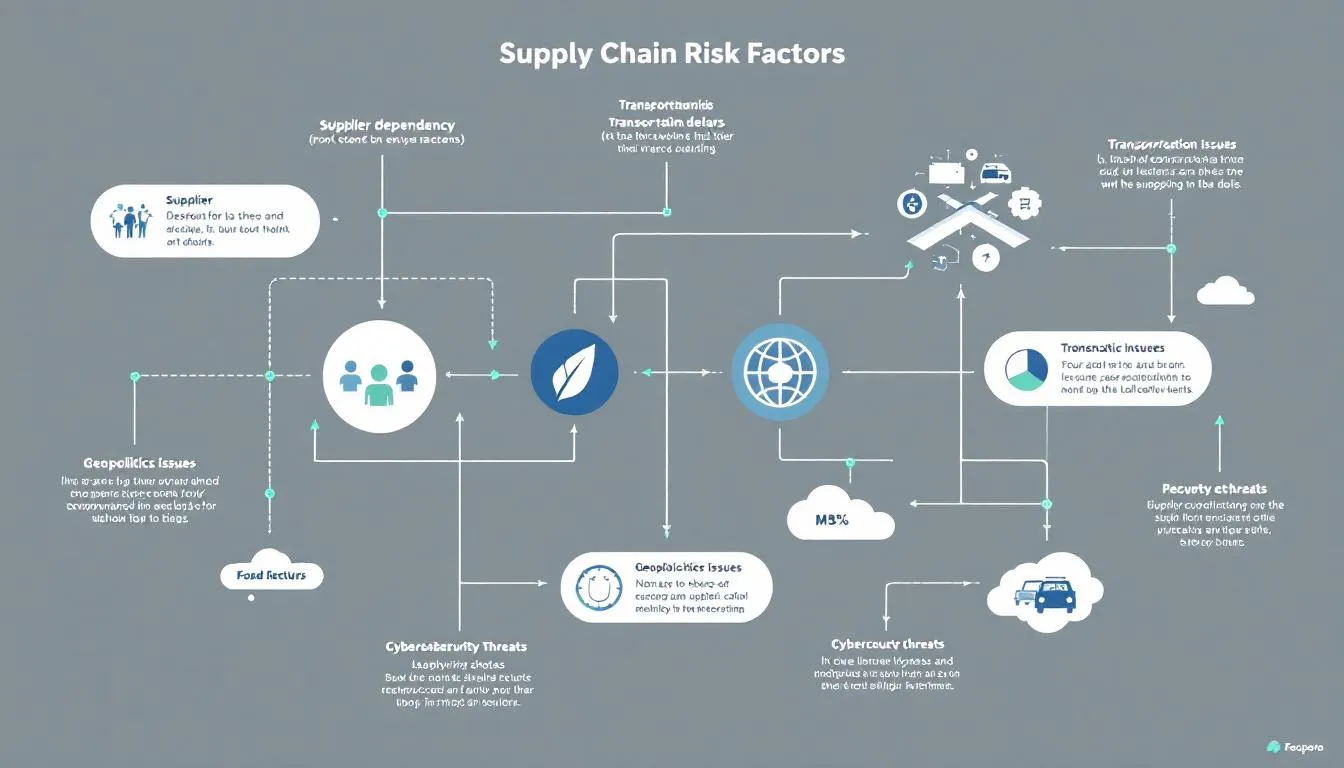
The first crucial step for supply chain managers is identifying and cataloging potential risk factors, such as labor shortages and extreme weather. Supply chain experts emphasize that early recognition of these risks allows companies to implement effective strategies to manage supply chain and reduce them. Identifying risks is essential for organizations to manage supply chain disruptions and focus on reducing supply chain disruptions through proactive planning.
Digital technologies play a vital role in this process. These technologies enhance visibility by enabling data collection and analysis across supply chains, thereby reducing disruption risks. Digital systems allow for real-time disruption detection, helping supply chain managers respond promptly and minimize impacts. Increased supply chain visibility helps manufacturers track components as they move through the supply chain.
Risk Assessment Tools
Tools like financial forecasting, predictive analytics software, and digital technologies are essential for managing supply chain risks. Evaluating a supplier’s financial health and product lines helps managers effectively assess risk exposure. These tools enhance visibility, accelerate planning, and enable predictive analytics, crucial for risk mitigation.
Predictive Analytics
Predictive analytics tools allow manufacturers to run simulations, identifying future scenarios and necessary operational adjustments. Using historical consumer demand data, inventory trends, and social media information on strikes and disasters, manufacturers can forecast potential disruptions.
Digital twin technology allows businesses to virtually replicate their supply chains, enhancing risk analysis capabilities.
Developing Contingency Plans
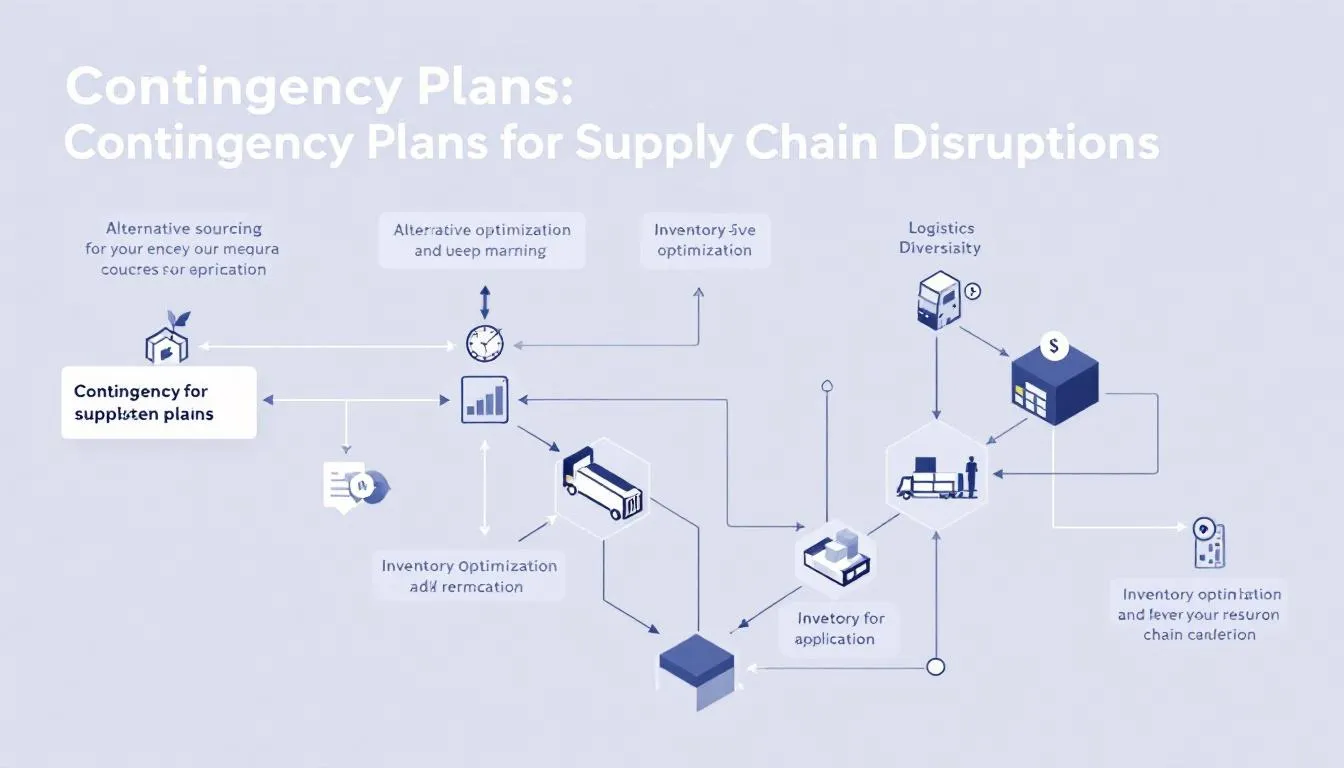
A contingency plan outlines specific actions, such as reallocating resources during disruptions. Mapping steps from identifying the cause to rebalancing operations and communicating plans is key for an efficient strategy. Organizations should create a playbook with multiple scenarios for potential disruptions. Backup inventory helps companies meet demand without drastically changing prices during supply delays. Strategically located distribution centers further improve responsiveness and reduce vulnerability to disruptions.
Real-time visibility enables dynamic supply chain monitoring, allowing quick identification and response to disruptions. Optimizing transportation routes is also a key part of contingency planning, ensuring timely deliveries and reducing risk during disruptions. This visibility is crucial for executing contingency plans effectively, enhancing operational efficiency and ensuring timely decision-making.
Scenario Planning
Scenario planning helps organizations anticipate different outcomes and prepare responses for various disruptions, effectively preparing for potential supply chain interruptions.
Combining scenario planning with advanced risk assessment tools enhances the ability to respond effectively to supply chain disruptions. Segmenting the supply chain can improve profits and reduce supply chain fragility by minimizing the impact of disruptions.
Regular Updates
Regularly updating contingency plans ensures they remain effective in responding to emerging risks and changes in the supply landscape. Automated systems can streamline this process, keeping all relevant data current and accessible.
One of the biggest challenges in keeping contingency plans updated is overcoming resistance to change within the organization.
Enhancing Supply Chain Visibility
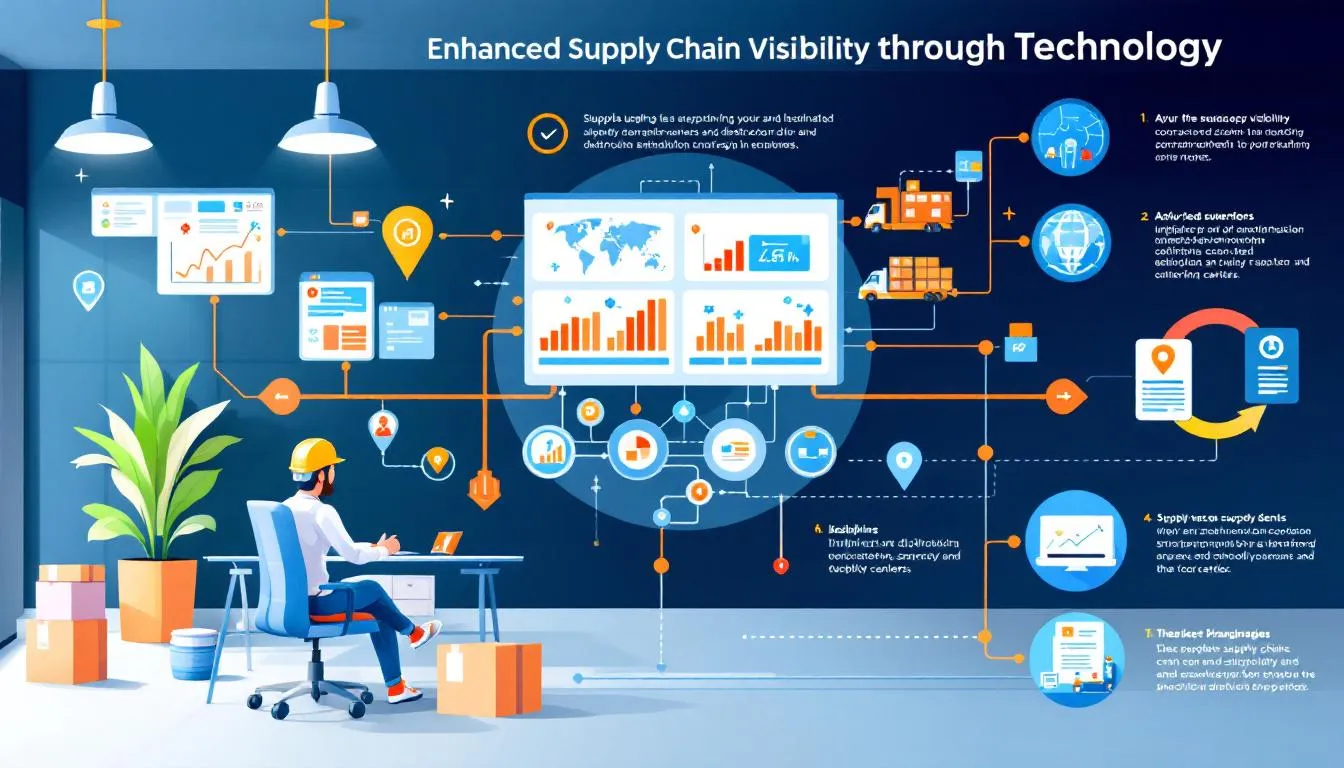
Real-time visibility is key for promptly identifying and managing disruptions, ensuring smoother operations. Enhanced visibility also contributes to supply chain efficiency by enabling faster decision-making and reducing operational bottlenecks. Collaborating with suppliers and using real-time tracking tools helps businesses identify the root causes of issues more effectively, facilitating easier stock replenishment and better demand management.
Monitoring supplier performance through metrics helps to identify issues early and facilitates prompt feedback and collaboration on solutions. Utilizing smart, cloud-based supply chain tools enhances visibility and responsiveness to risks in supply chain management.
IoT and RFID Technologies
IoT and RFID technologies enhance tracking and data analysis across the supply network. IoT devices provide immediate information on inventory and shipment statuses, improving supply chain tracking.
RFID technology boosts inventory accuracy by automatically tracking items and reducing manual entry errors.
Cloud Computing
Cloud computing enables seamless data sharing and collaboration among supply chain partners, improving responsiveness. It promotes real-time data sharing, facilitating more effective collaboration and enhancing operational transparency.
Strengthening Supplier Relationships
Strong supplier relationships enhance supply chain resilience, enabling better collaboration and quick responses to disruptions. For instance, automotive manufacturers are adopting new sourcing models and strengthening ties with semiconductor suppliers to address chip shortages. Major car manufacturers are also diversifying their supplier networks to avoid dependency on single sources. It's important not to put all your eggs in one basket by relying on a single supplier; diversification helps mitigate risks and ensures continuity.
Effective communication strategies significantly reduce misunderstandings and delays, leading to smoother operations and quicker problem resolution. By integrating these strategies, companies can clarify expectations and improve collaboration between supply chain partners.
Diversifying suppliers mitigates risks associated with dependence on a single source, ensuring more stable supply chains and better negotiation power with alternative suppliers.
Communication Strategies
Effective communication with suppliers can significantly reduce misunderstandings and delays, leading to smoother operations and faster problem resolution.
For example, a retail company tackled transportation delays and labor shortages by investing in digital technologies and improving communication with stakeholders to maintain customer satisfaction.
Supplier Diversification
Diversifying suppliers mitigates risks associated with dependence on a single source by:
-
Ensuring more stable supply chains
-
Providing better negotiation power
-
Averting delays, particularly in scenarios where risks such as labor strikes might affect a primary supplier.
While supplier diversification is beneficial for enhancing stability, it requires careful management to navigate potential complications.
Implementing Automation Solutions
Automation solutions increase efficiency by monitoring supply chain stages, tracking inventory levels, and automatically reordering supplies, aiding in disruption management. While implementing automation may involve a higher cost upfront, these investments can lead to long-term savings and greater supply chain resilience. Building redundancy and adopting new technologies can result in increasing costs, but these measures help reduce supply chain fragility and mitigate risks. By freeing up the workforce from tedious tasks, automation helps address labor shortages. Enhanced supply chain visibility also improves decision-making and operational efficiency, crucial for navigating disruptions.
Robotic process automation prevents ordering mistakes and reduces manual data entry errors, enhancing efficiency. Software integration is crucial in supply chain management, connecting data across systems to improve planning and order management.
AI and Robotics
AI and robotics automate supply chain processes, streamlining operations and improving efficiency. Automated systems can issue notifications about order delays, enhancing communication and relationships with suppliers.
Inventory Management Systems
Advanced inventory management systems optimize stock levels and mitigate supply delays. Platforms like Oracle SCM assist in managing inventory by controlling the flow of goods across the organization and networks, including supply chain systems and information technology systems.
Warehouse robotics increase efficiency by handling tasks like sorting and packing, reducing human error.
Investing in Cybersecurity
With ever-evolving cyber threats, investing in cybersecurity is crucial for supply chain managers. Cyberattacks often exploit suppliers with weak protections to access larger target companies, targeting digital systems and supply networks, thereby increasing vulnerabilities and potentially disrupting the entire supply chain.
Companies need to collaborate with partners and implement new technologies to enhance their cybersecurity posture. The rising frequency of supply chain breaches highlights the need for robust cybersecurity measures.
Cybersecurity Protocols
Strong cybersecurity protocols are crucial for protecting supply chains from cyberattacks. Measures include robust firewalls, intrusion detection systems, and endpoint security. Additionally, companies should implement third-party risk management procedures to enhance their cybersecurity posture.
Employee Training
Employee training in cybersecurity equips them with skills to protect against threats. Effective training helps employees recognize and respond to cybersecurity threats, making it a vital part of any cybersecurity strategy.
Building Supply Chain Resilience
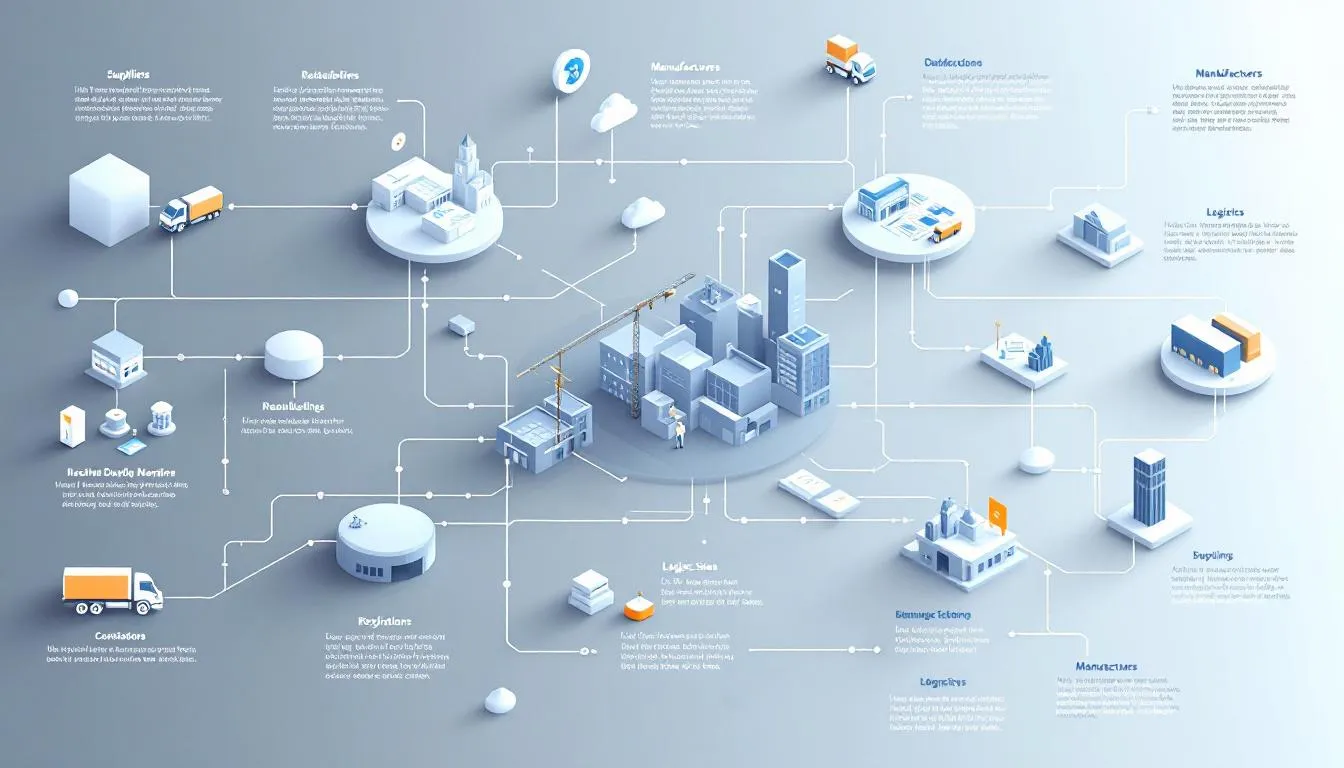
Building supply chain resilience involves quickly recovering from disruptions by creating buffers and alternatives. The wide range of supply chains represented in global trade means that disruptions can impact multiple industries, causing delays, increased costs, and financial losses. Technologies like 3D printing and logistics applications enhance resilience by enabling faster decision-making and greater optimization, ultimately improving chain efficiency and creating a more resilient supply chain and resilient supply chains.
Ongoing education on cybersecurity threats and regular training on recognizing phishing attempts can significantly reduce the risk of cyberattacks. Awareness programs that teach employees secure practices enhance the overall security posture of the supply chain.
Diversified Supply Networks
A diverse vendor network reduces risks from environmental or geopolitical shocks. Multiple suppliers help companies navigate challenges like supplier insolvency or regional disruptions, enhancing supply chain resilience.
Sustainability Initiatives
Sustainability initiatives enhance supply chain resilience by ensuring raw materials are renewable and responsibly harvested, reducing environmental degradation. Energy-efficient transportation reduces fuel consumption and greenhouse gas emissions, further enhancing sustainability and resilience. Regionalizing the supply chain can improve resilience to local disruptions.
Summary
Managing supply chain disruptions is a multifaceted challenge that requires a proactive and comprehensive approach. From identifying potential risk factors and developing robust contingency plans to enhancing supply chain visibility and investing in cybersecurity, each strategy plays a crucial role in building a resilient supply chain. Rising global inflation is one of the factors making supply chain operational costs unpredictable. Supply chain automation can increase efficiency by sharpening demand planning and saving money over time. By leveraging technology, strengthening supplier relationships, and adopting sustainability initiatives, companies can better navigate the complexities of today’s global supply chains.
In conclusion, the key to managing supply chain disruptions lies in preparedness, adaptability, and continuous improvement. Supply chain disruptions increased nearly 50% in the first half of 2022 compared with the same period in 2021. By implementing the strategies discussed in this guide, businesses can enhance their resilience and maintain operational efficiency even in the face of unexpected challenges. Remember, a resilient supply chain is not just about surviving disruptions but thriving despite them.
Frequently Asked Questions
What are the main causes of supply chain disruptions?
The main causes of supply chain disruptions include global pandemics, natural disasters, geopolitical tensions, and economic uncertainties. Understanding these factors can help businesses develop more resilient supply chains.
How can companies identify potential risk factors in their supply chains?
Companies can effectively identify potential risk factors in their supply chains by leveraging digital technologies for enhanced visibility and utilizing risk assessment tools and predictive analytics for real-time disruption detection. This proactive approach is crucial for effective risk management.
Why is it important to develop contingency plans for supply chain disruptions?
Developing contingency plans for supply chain disruptions is essential to ensure timely responses and minimize impacts when issues arise. Regularly updating these plans keeps them effective and relevant to current challenges.
How do strong supplier relationships enhance supply chain resilience?
Strong supplier relationships enhance supply chain resilience by fostering collaboration and enabling rapid responses to disruptions, supported by effective communication and diversification. This proactive approach helps ensure continuity and stability in operations.
What role does cybersecurity play in managing supply chain risks?
Cybersecurity plays a vital role in safeguarding supply chains from cyberattacks that can disrupt operations. By implementing robust cybersecurity measures and training employees, organizations can effectively mitigate these risks.
Share this
You May Also Like
These Related Stories

Maximizing Efficiency with LIMS Reporting: A Practical Guide for Labs

Top Strategies for Effective Laboratory Operations Management
.png)

No Comments Yet
Let us know what you think